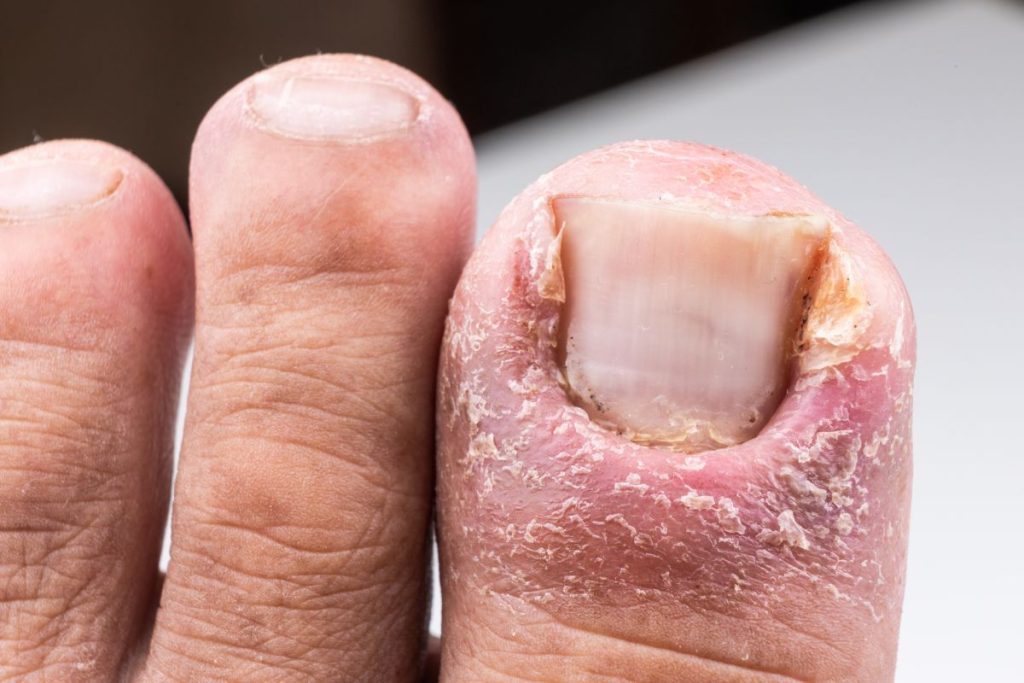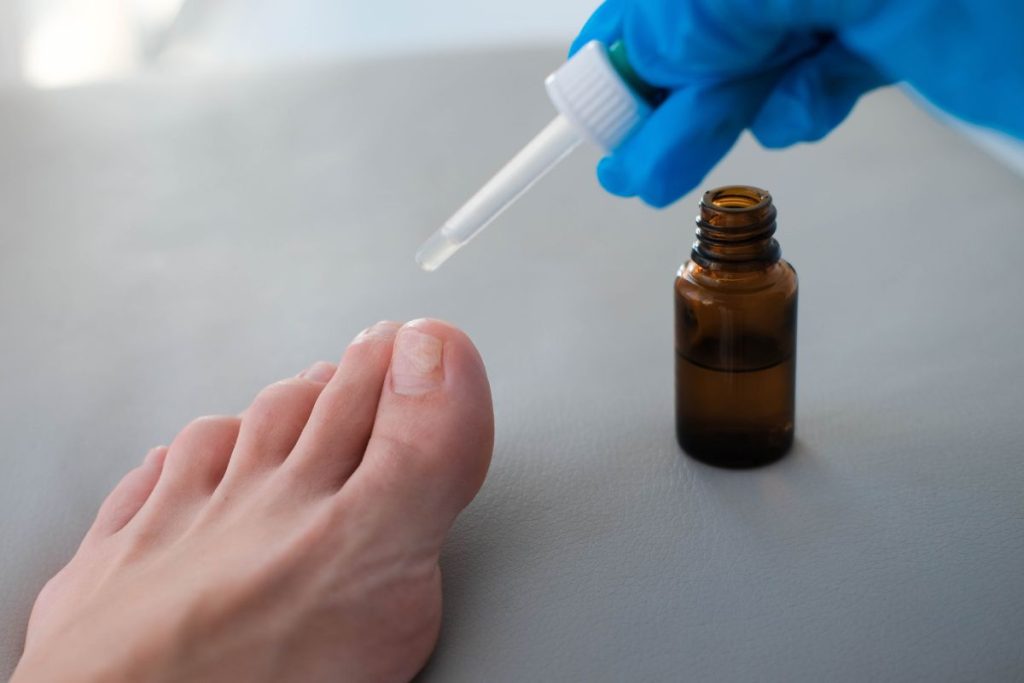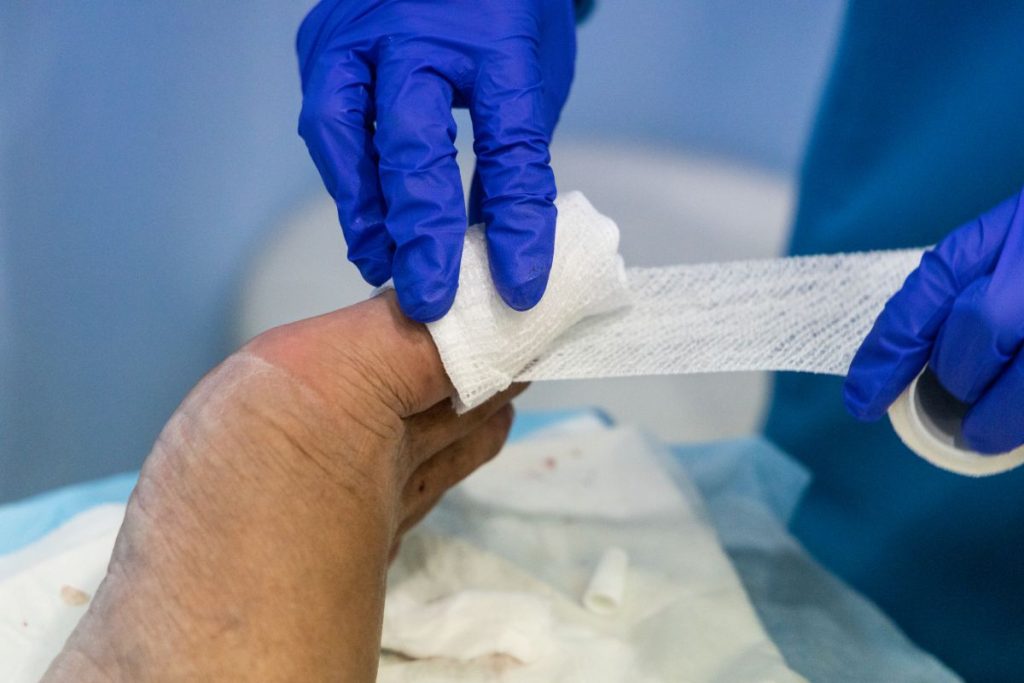If your toenails are turning yellow, brittle, and look odd, it might mean you have a fungal nail infection known as onychomycosis. These infections don’t disappear on their own and can easily spread from person to person if left untreated.
“Fungi are like freeloaders,” explains Dr. Boni Elewski, a dermatology professor at the University of Alabama at Birmingham. If you come into contact with someone who has the infection or walks barefoot in places like changing rooms, the fungus can sneak under your toenail and infect it. Wearing damp, sweaty shoes can make the problem worse.
Toenail fungus affects approximately one in ten people worldwide and becomes more common as you get older, affecting over half of those aged 70 and older. People with diabetes or weakened immune systems are also at risk, says Dr. Shari Lipner, a dermatologist in New York City.
Also read: OSTEOPOROSIS TREATMENT
Is Toenail Fungus Actually Fungus?
But before you start treating it, it’s important to confirm if it’s really a fungus causing the issue. Some signs of toenail fungus include thickened, discoloured, cracked, misshapen, and sometimes painful or smelly nails. However, not all abnormal-looking toenails are caused by fungus. Trauma to the toenails, whether from an injury or wearing tight shoes, can also lead to discolouration or thickening.

According to Elewski, it’s usually necessary for doctors to examine a toenail clipping under a microscope to confirm toenail fungus. They can also perform tests like PCR or a fungal culture to identify the specific fungus responsible. Still, these tests aren’t always required since most cases are caused by a fungus called trichophyton rubrum, as per Lipner. If your treatment isn’t working, though, your dermatologist might want to identify the specific fungus causing the problem.
Prescription antifungal medications are effective in treating toenail fungus, but it’s essential to confirm the diagnosis before taking them. Using antifungal drugs unnecessarily can reduce their effectiveness over time, which contributes to a problem known as antifungal resistance.
What are the Treatments for Toenail Fungus?
While you can find various over-the-counter fungal creams in drugstores, Dr. Elewski explains that these non-prescription or home remedies can only enhance the appearance of your nails.
If your goal is to actually eliminate the fungus, your only option is a prescription antifungal, according to Dr. Antonella Tosti, a dermatologist specialising in nail disorders at the University of Miami Miller School of Medicine. There are two types: topical prescriptions like creams, ointments, or serum-like solutions, and oral antifungals in the form of pills.

For less severe cases that affect only one or two toenails, topical antifungals can be helpful, says Dr. Lipner. However, one drawback is that you may need to use the medication for up to a year before the fungus is completely eradicated.
If multiple nails are affected by the fungus, or if your toenails are unusually thick, Dr. Lipner typically recommends oral prescriptions. These oral antifungals can clear toenail fungus in about three months. Nevertheless, even after the oral treatment eliminates the fungus, your toenail may still appear abnormal for a year as the new, healthy nail grows in.
Meanwhile, some over-the-counter remedies can enhance the look of your nails by soothing the surrounding skin or thinning the nails, as suggested by Dr. Elewski. It’s usually okay to use nail polish on your infected toenail while taking oral antifungals, according to Dr. Lipner, but avoid it if you’re using topical medications.
Regardless of whether you’re prescribed a topical or oral antifungal, Dr. Tosti emphasises the importance of consistent daily treatment. She points out, “This is not something you can cure in a few weeks; compliance is very important.”
How to Prevent Toenail Fungus from Coming Back
Even after successfully getting rid of toenail fungus, it’s possible to get infected again, according to experts. In fact, around 25 per cent of people experience repeat infections.

Dr. Lipner suggests a few steps to prevent recurrence:
- Thoroughly wash any socks or clothing that came into contact with your first infection.
- Consider discarding or using disinfectant spray on shoes you frequently wore during your toenail fungus episode.
To lower your risk of getting toenail fungus in the first place, follow these guidelines:
- Keep your toenails trimmed.
- Avoid walking barefoot in places like gym changing rooms and around swimming pools.
- If your feet tend to sweat in closed-toed shoes, wear moisture-wicking socks and switch to dry shoes when possible.
If you notice dry, itchy, flaky, or inflamed skin on your foot, it could be athlete’s foot, which is caused by the same fungus that can lead to toenail fungus. It’s essential to seek treatment promptly. Unlike toenail fungus, some over-the-counter medications can help with athlete’s foot. However, Dr. Lipner advises against self-treatment and recommends confirming with a dermatologist that you’re addressing the right issue.







